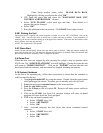
(Fig. 4) to help find home level in the Roll axis.
Fig. 5
Once the machine is in the HOME position (level on both pitch and roll
axis) it can be lowered. Using the manual BREAK RELEASE KNOB on
the back of the Lift Motor (Fig. 5), Slowly turn the knob clockwise until
the platform lowers from the elevated position. Adjust lowering speed by
the amount you turn the knob. Releasing of the knob will stop the
lowering.
CAUTION: WHEN LOWERING UNIT MANUALLY, ALLOW UNIT
TO COME TO A SLOW, SMOOTH STOP.
2-12 Power Interruptions and Restart Procedures
Should the power be interrupted, the following procedures should be followed.
2-12A Facility Emergency Lighting
Facility emergency lighting must be configured to allow attendants and patrons enough lighting to safely
exit the ride and area.
2-12B Restart Procedures
Even if the power comes back on, lower the platform to its full down position, using the manual lowering
procedure para. 2-11C. If the power is normal, you can follow the normal Start-up procedures para 2-
2.
2-13 Ride and Facility Evacuation Procedure
Terminate the ride from the PC. Quietly and calmly, have the queue line begin exiting the facility. Lower
the unit(s) open and unbuckle all patrons and assist with the evacuation of the facility. Follow the system
shut down procedure if time permits or at least press the “E-Stop” this removes power to the electric
motors. NOTE: It is most important that the power to the motors is disabled.
2-14 Ride Termination Conditions
1. Any abnormal vibration or abrupt motion changes that would not be considered part of the normal
operation.
2. Any undue movement of either the fiberglass, covering panels, A-frames or any hinges or fabricated
metal that would indicate fatigue, fracture or loose bolts.
3. Any type of electrical problem that would effect continuation of the game and could include electrical
problems within the building that could inadvertently affect the operation of the simulator.
4. Any computer malfunction that would include system lock-up, program termination or any other
condition that would affect game play.
5. Any condition with the movement that is abnormal (i.e. the TV set showing a roll where the simulator
remains stationary).
6. Any loose objects that roll around inside the cockpit as these items would damage the patron as well as
the components inside the cockpit.
7. Any signs that the concrete anchors may be loose by allowing the unit to walk or move.


















